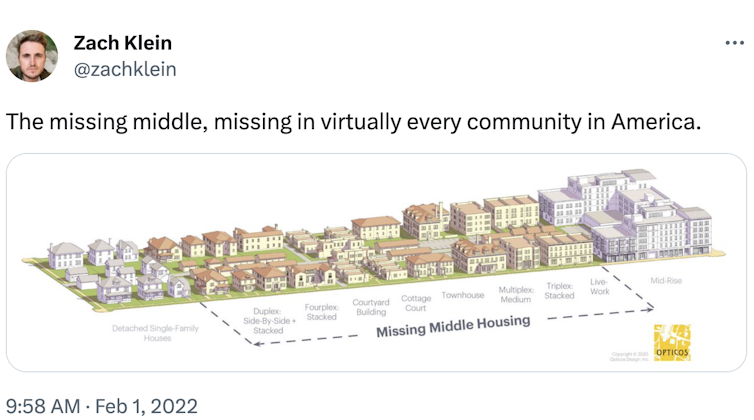How do we get urban density 'just right'? The Goldilocks quest for the 'missing middle'
- Written by Elek Pafka, Senior Lecturer in Urban Planning and Urban Design, The University of Melbourne

What would Goldilocks do if given the chance to pick the “just right” density for our cities? Depends who you ask.
Debates[1] over densities[2] in our cities[3] divide between advocates of low-rise detached housing and supporters of higher-density towers. Both offer little diversity. In Australian cities, but also in North America, we see a clear contrast between ground-scraping suburbs and clusters of CBD skyscrapers.
The combination of these two patterns of development has produced largely car-dependent cities. Commute times are long and carbon emissions high. Options are limited for those who wish to live in a neighbourhood with corner shops, short walking distances to a local centre, communal green space and public parks.
Neighbourhoods like this are enabled by mid-rise (three to seven storeys), mid-density housing. This form of building has been dubbed the “missing middle[4]”. Decades of planning for urban consolidation has made little difference – medium density is still missing in many of our cities.

















